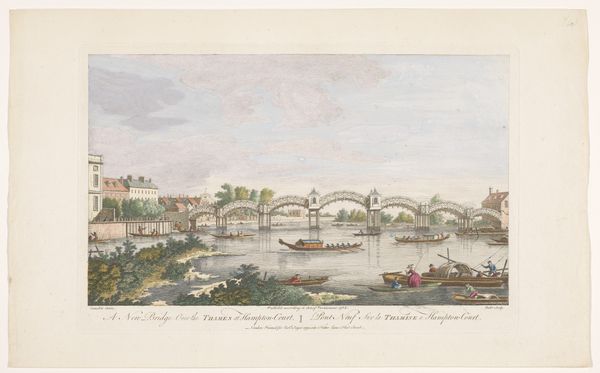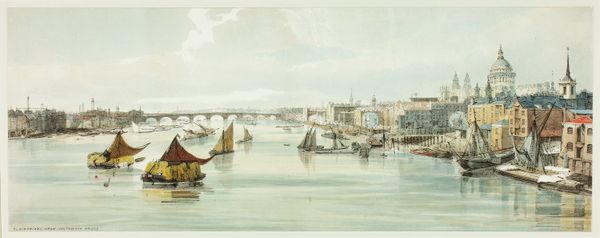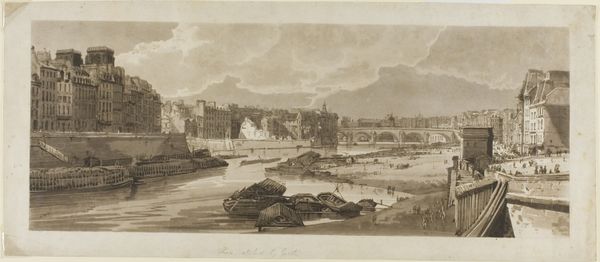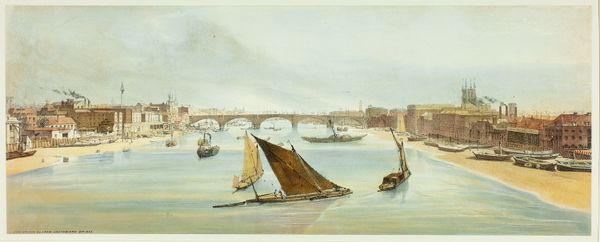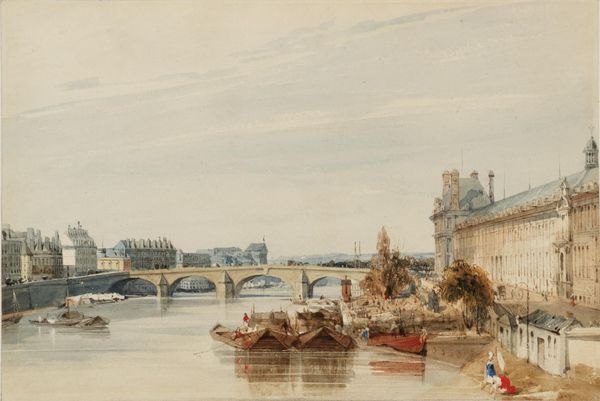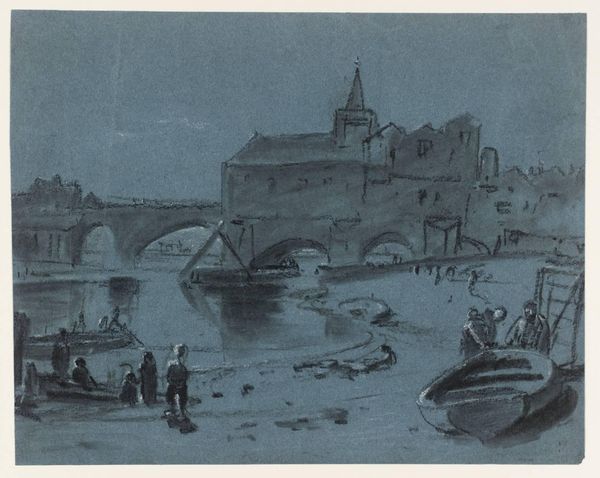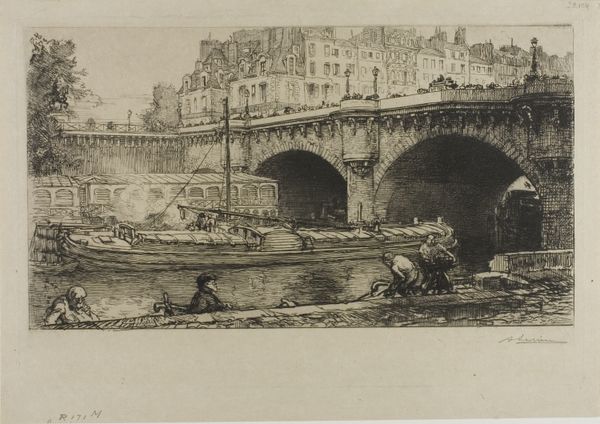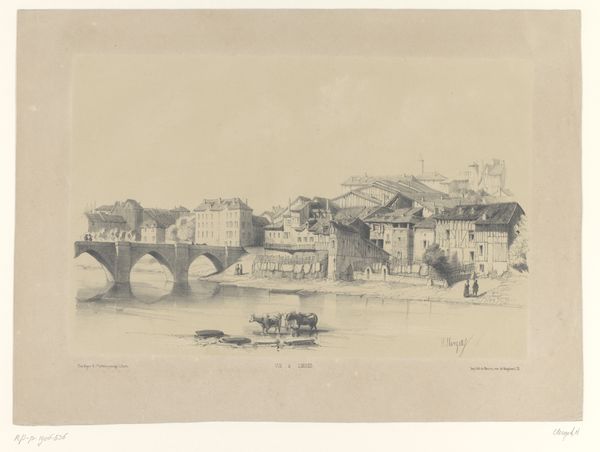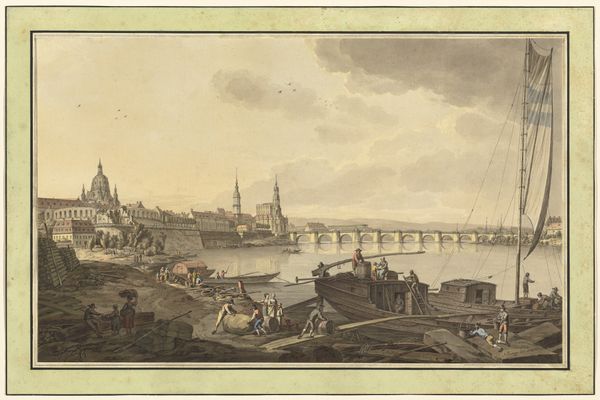
print, etching, watercolor
# print
#
etching
#
landscape
#
etching
#
watercolor
#
romanticism
#
cityscape
#
watercolor
Copyright: National Gallery of Art: CC0 1.0
Thomas Girtin captured this view of Paris’s Pont Neuf, the Mint, and other iconic structures in a print. Painted in the late 1790s or early 1800s, this print offers a window into a city still processing the seismic shifts of the French Revolution. By 1802, when Girtin died at only 27, the revolutionary fervor had cooled, giving way to the Napoleonic era. Notice the figures along the embankment, a mix of classes going about their daily lives against the backdrop of grand architecture, which speaks to the enduring social fabric of Paris. This was a period when artists sought to capture not just the likeness of a place, but its atmosphere, its history, and its social dynamics. Prints like this allowed for wider circulation of such images, influencing perceptions of Paris among those who had never visited. To truly understand this image, we can delve into the archives of Parisian life from this era, exploring how the city rebuilt itself, literally and figuratively, after the revolution.
Comments
No comments
Be the first to comment and join the conversation on the ultimate creative platform.
